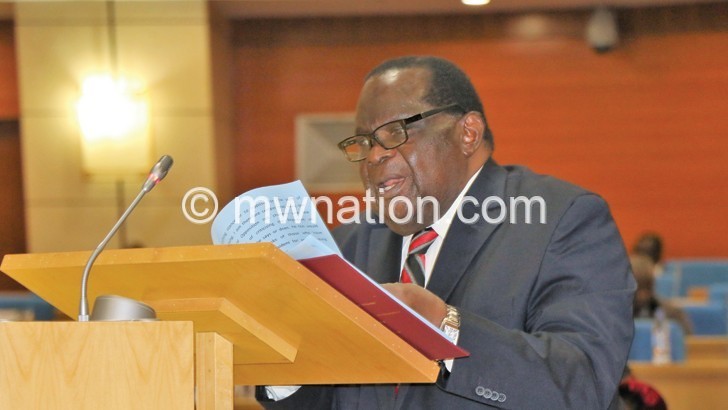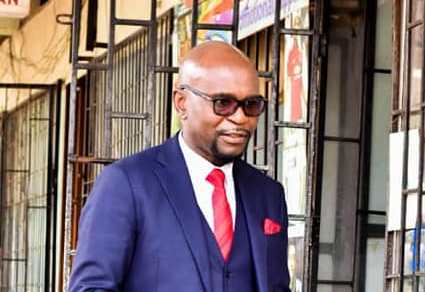Domestic debt to rise 473.6%
Malawi’s domestic debt is projected to rise by 473.6 percent as government plans to borrow about K176.1 billion in the next financial year starting on July 1 against K30.7 billion in the revised 2017/18 National Budget.
The development has prompted a public finance analyst to caution government to tame its appetite for domestic borrowing or risk hurting the private sector, touted as the engine of growth, through increased cost of borrowing.

As of December 2017, Reserve Bank of Malawi (RBM) figures showed that the country’s public debt stood at K2.4 trillion, representing K1.4 trillion external debt and K1.2 trillion domestic debt.
In the 10 years to December 2017, Malawi has spent K123 billion in servicing debt—money that is required to cover the repayment of interest and principal on debt for the period. Out of the amount, K52 billion covered interest payments.
In a presentation to members of Parliament (MPs) and stakeholders from the health, education, agriculture and social sectors during a Budget Analysis Open Day in Lilongwe yesterday, Malawi National Assembly public finance analyst Mphatso Elias Ackim warned on domestic borrowing.
He said reducing wastage and leakages in the expenditure chain were key to putting domestic borrowing in check.
Said Ackim: “The government needs to control expenditure, which tends to develop into unsustainable debts which will adversely affect the economic outlook. There is also a need to increase revenue collection.”
He observed that the surge in borrowing—from only K30.7 billion in the revised 2017/18 fiscal year—was necessitated by under-performance of revenues and grants.
The unplanned K45 billion bailout of the State produce trader Agricultural Development and Marketing Corporation (Admarc) and the fact that K55 billion in grants expected from donors did not trickle in greatly exerted pressure on the budget.
Borrowing by a government is deemed to be sustainable when below 50 percent of the gross domestic product (GDP), broken down as domestic borrowing at not beyond 20 percent of the GDP threshold and external borrowing not exceeding 30 percent of the same.
But, as of December 2017, Malawi’s total debt was 55 percent of the GDP, with external debt accounting for 29 percent of GDP and domestic debt at 26 percent of the GDP.
To this, Ackim said: “Although the debt situation is within sustainable levels, the government should be mindful that the country may register unsustainable debts and the surge in domestic borrowing may result in unsustainable debt and the crowding out of private sector investment.”
While acknowledging that domestic borrowing is escalating, Ministry of Finance, Economic Planning and Development budget director Peterson Pondelani said there is a need for planning to avoid increased borrowing.
He said: “That is where planning comes in. We should reduce expenditure if we are to reduce domestic borrowing. We also need to increase our revenue collection.”
Stakeholders at the meeting said it was sad that domestic borrowing is increasing, even though the budget seems not to be people- centered.
Federation of Disability Organisations in Malawi representative Sigele Kasasi wondered what basis the government uses to develop the budget, noting that there is so much borrowing and yet some sectors are left out and people’s needs are not met.
In summing up plenary discussion, chairperson for the Parliamentary Committee on Education Elias Chakwera urged Treasury to take responsibility in ensuring a people-centred budget which serves Malawians.
But in an interview last evening, Ministry of Finance, Economic Planning and Development spokesperson Davis Sado said the Mid-Year Budget Review earlier this year had given the government the opportunity to make needed adjustments in the budget framework.
He stated that the 2018/19 budget projection is based on realistic factors, including an upturn that has seen the Malawi Revenue Authority (MRA) beginning to improve significantly in its revenue-collection efforts lately.
He said: “We have not been over-ambitious in casting the budget. We will continue monitoring our overall performance towards the successful implementation of our budget framework.”
In April this year, the World Bank warned African governments, including Malawi, to borrow responsibly or risk their public debts reaching unmanageable proportions with the structure changing from concessional to market loans.
But Minister of Finance, Economic Planning and Development Goodall Gondwe has on several occasions defended Malawi’s debt levels, describing them as manageable.
During the Mid-Year Budget Review Meeting in February this year, the minister said government’s annual domestic borrowing had declined from K94 billion in 2014/15 to K37 billion in 2016/17 and to a planned figure of K28 billion in 2017/18.
Presenting a report on loans incurred since independence in 1964, Gondwe said the current external debt was 23 percent of the gross domestic product (GDP) against the 30 percent recommended for low-income countries.





